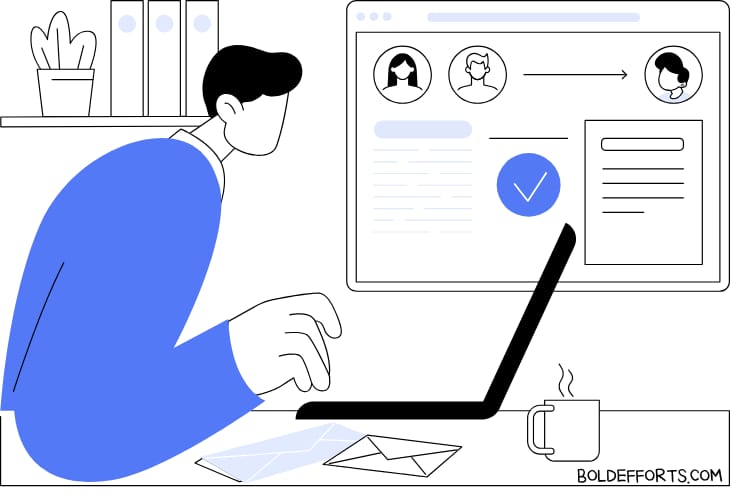Hello! 👋
It’s Thursday, 17th October, and today we're diving into recent research from the London School of Economics on how WFH impacts productivity in public sector jobs. Let’s break it down. First time reading? Join over 300 intellectually curious readers. Sign up here.
As always, send me feedback at [email protected].
Let’s get started!
Key Idea: Remote work in the public sector
Have you ever wondered if working from home actually makes people more productive, especially in jobs where money isn't the main motivator? Today, we’re exploring an eye-opening study on exactly that.
Experiment Design
In early 2024, researchers at the London School of Economics set out to study how working from home (WFH) affects productivity in the public sector, where workers have strong job security and aren't motivated by financial incentives. They published their findings in a paper titled "Not incentivized yet efficient: Working from home in the public sector."
The study focused on the Crime Recording and Resolution Unit (CRRU) of Greater Manchester Police. The CRRU staff record details of emergency and non-emergency calls. It is a task that doesn’t require team interactions and can be easily measured by the number of cases recorded per day. The staff alternated between working from home and working in the office, creating an ideal scenario to assess productivity changes.
By comparing worker productivity during WFH and in-office days, the researchers could isolate the effect of work location while minimizing other variables, such as team dynamics or task assignment bias.
Results
The findings were compelling:
When cases were randomly assigned by a computer, workers recorded 12% more cases per day when working from home.
When a supervisor allocated cases, productivity increased by 1.5x additional cases per day compared to the baseline. The supervisor’s understanding of each worker’s strengths led to 50% increase in productivity.
The productivity boost from WFH was not due to changes in shift length, task nature, or quality. Reduced distractions at home were the key driver.
WFH did not lead workers to start earlier or work past their scheduled shifts, nor did it prove that some individuals are uniquely suited for WFH; contrary to popular belief.
Moving from hybrid work (70% WFH) to almost exclusively WFH (95% of time at home) did not yield additional productivity gains. The study found no significant difference in productivity between these two arrangements.
Key Takeaway
This study provides a nuanced perspective on the benefits of WFH, particularly in the public sector where motivation is less influenced by financial incentives. The evidence points towards productivity gains driven by fewer distractions, but no additional gains from going fully remote over a hybrid model.
Another critical takeaway from this study is the understanding that productivity gains are not necessarily linked to work hours or a specific location but rather to the quality of the work environment. Reduced distractions, better task alignment by supervisors, and flexibility are all contributing factors to better performance. For organizations, this means that rather than rigidly enforcing a particular work arrangement, it may be more beneficial to empower teams to choose the setup that works best for them, depending on the nature of their tasks and personal preferences.
The findings also challenge the notion that some workers are inherently more suited to remote work. Instead, productivity seems to be more about reducing obstacles, such as distractions, and less about individual differences. This reinforces the idea that creating a supportive work environment, whether at home or in the office, can help maximize productivity across the board.
It's important to note that this study focused on environments where the work is individual, and productivity benefits significantly from reduced distractions. These productivity gains may not apply to settings that rely on creativity, teamwork, frequent interactions, and contributions from multiple individuals.
So What?
Public sector employees are, fundamentally, like any other workers. Remote and hybrid work arrangements make them happier by eliminating long commutes, reducing expenses, and providing more time with family, all contributing to greater comfort and work-life balance. Happier employees translate to higher engagement, improved morale, and enhanced productivity, making them invaluable assets, whether in the public or private sector.
Remote work also opens the door to new efficiencies, allowing employees to focus on deep work without office distractions, and enables public sector institutions to save on operational costs such as office space, utilities, and commuting subsidies. Furthermore, it allows for a broader and more inclusive talent pool by removing geographical barriers, which can help attract highly qualified candidates from across the country, even from underrepresented regions.
The core realization here is that productivity hinges less on where we work and more on how we are supported. Employees clearly value the flexibility that remote work offers. Therefore, the greatest benefit of embracing remote and hybrid models in the public sector is the ability to attract top talent: those who can bring fresh solutions to society's most pressing issues.
By modernizing work practices, the public sector can not only solve problems more effectively but also set an example for adaptability and progress.
Thank you for reading! See you next Thursday.
Best,
Kartik
Enjoying the read? Stay ahead with unique insights on the future of work and living. Subscribe to the Bold Efforts newsletter and receive fresh stories and ideas straight to your inbox every Thursday.
Curated Reads
Handpicked news, articles, and expert opinions - crafted just for you.
A. Microsoft hasn’t chased Amazon back to the office. It’s even cutting back on office space [Seattle Times]
Microsoft is keeping its remote-first policies in place. For the past two years, Microsoft has been getting rid of offices on the Eastside.
B. France's Ubisoft faces three day strike as unions protest over remote work decision [RFI]
Unions have called employees of video games giant Ubisoft to go on strike for three days in a dispute over remote working and pay, hitting a firm already struggling with poor sales and a collapsing share price.
C. Boston Residents Face 28% Tax Hike as Office Values Slump [Bloomberg]
Commercial property values in Boston have fallen 7% in the current fiscal year, reflecting high vacancy rates amid the persistence of pandemic-era remote and hybrid work policies. As a result, politicians are doing what they do best - coming up with silly ideas.
D. RTO policies ignored by 1 in 5 workers [The HR Digest]
Employees refuse to believe their work quality or overall quality of life will improve if they return to working within the physical office space. These employees are committed to resisting RTO rules
E. America's offices are about to see a wave of distress that could result in a billion square feet of fresh housing supply [Business Insider]
That chain reaction already looks to be in the works, with banks quietly shedding troubled office properties from their balance sheets and conversions starting to trickle into the mix.
Who am I?
I’m Kartik, founder of Polynomial Studio, a holding company and product studio building AI-driven businesses for the future of work. The way we work and live is being rewritten. AI, remote work, and shifting economic forces are reshaping careers, businesses, and entire industries. The big question is where it’s all heading.
For the past eight years, I’ve been at the forefront of these shifts, working across real estate, technology, startups, and corporate strategy. I’ve helped businesses navigate change and stay ahead of what’s next, always focused on understanding the forces shaping our future and how we can use them to build something better. Click here to know more about me.
Why Bold Efforts?
I started Bold Efforts because I believe work should fit into life, not the other way around. Too many people are stuck in outdated systems that don’t serve them. This newsletter is about challenging the status quo and making the effort to design work around life. It brings together bold ideas and actionable insights to help you build a healthier, more balanced relationship with work, leading to greater purpose and fulfillment. If you’re looking for fresh perspectives on how to work and live better, you’re in the right place.
Was this email/link forwarded to you? Subscribe here


